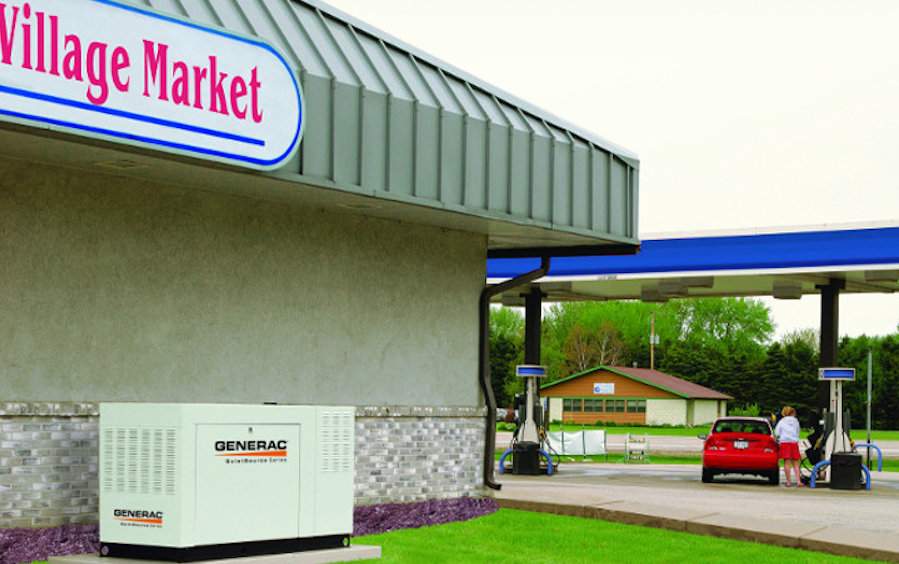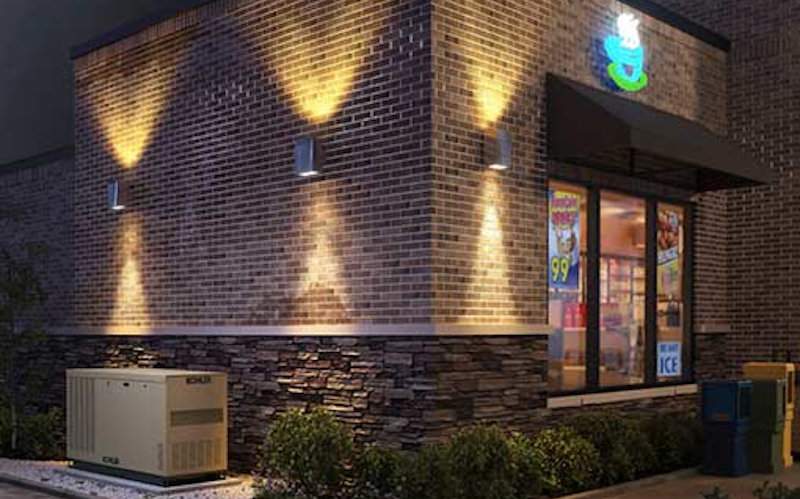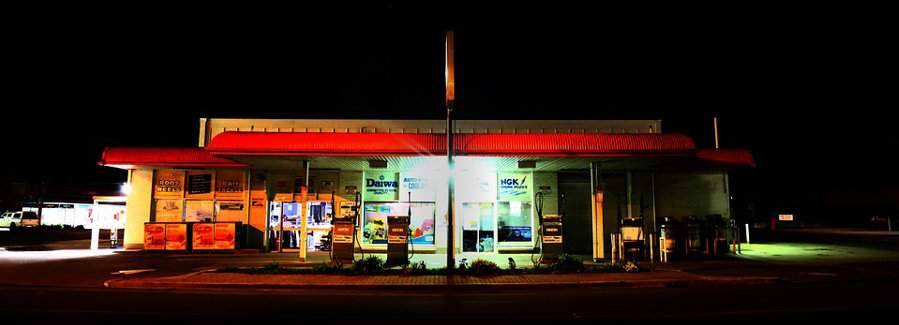
Generac Commercial Generator at a Gas Station Convenience Store
Commercial Generator Sizing
Every business is different and has different power needs. Even when all the equipment is the same, differences in the way a business operates, the number of customers and employees, and the surrounding environment all play a part in determining the size of commercial generators.
Commercial standby generators supply power for manufacturing, retail, restaurant, and other applications during power outages. Without backup power, most businesses are forced to close. Lack of power can have devastating consequences, especially during extended outages lasting more than a few hours.
Backup power for refrigeration units, freezers, heating, and security is critical during a power outage along with other applications. Commercial generators prevent losses associated with outages, keep businesses operating, and allow important building services to continue.
50kW to 150kW Cummins Commercial Generators
Sizing Considerations

Generac Diesel Protector Commercial Standby Generator
Choosing the correct commercial generator for a business requires more consideration than residential applications. Single or 3-phase power, voltage, and total power requirements are all factors to consider. Most commercial applications require a greater reserve or surge capability especially when large motors on multiple pieces of equipment operate independently of each other and turn on and off frequently.
The inrush current of large motors can exceed 200 percent of the normal full-load current for short periods. Lack of starting capacity can make motors difficult to start or cause damage. Include the allowable voltage drop for any device when calculating the reserve capacity required for the generator. A momentary voltage drop of 30 percent might be fine for some devices, but not others.
Fuel is another consideration when selecting a commercial generator. Diesel engines have a reputation for longevity and reliability. Diesel fuel storage is a concern and governed by local codes that vary between jurisdictions. Natural gas is widely available in cities and towns but less common in small towns and rural areas. Natural gas does not require storage and is delivered directly to the user via pipeline. Liquified Petroleum Gas (LPG) or Propane is easy to store on site and poses fewer environmental risks than Diesel Fuel.
Commercial Generator: Choose the Right Fuel
Large-scale commercial applications usually require an engineering plan and an engineer’s supervision during installation to ensure correct generator sizing and compliance with National Electrical Code (NEC) requirements. Smaller installations only require a building permit and installation by a qualified or licensed electrician.
Since 2008, the National Electrical Code includes articles 700, 701, 702 and 708 which govern the sizing, installation and use of commercial generators and the critical systems that operate during an emergency to ensure safety. Safety systems include alarms, fire pumps, health/safety systems, and any other system designed to protect life during an emergency. Consult your local commercial building code authority for details and implementation in your area, and what systems are required.
22kW to 40kW Cummins Commercial Generators
Generator Sizing
Full Load Capacity by Measurement

Kohler Commercial Generator Installed at a Convenience Store
Estimate the required generator capacity by taking full-load current measurements during peak usage at the service panel. Use a clamp-on ammeter on each leg of the electrical service and add the measurements together. This provides the total amps used by the facility.
Divide the total amps by three for three-phase current, and by two for single-phase current, then multiply the result by the supply voltage, and again by 1000 for Kilowatts(kW) Required.
Add the power in kilowatts used by each emergency safety system according to articles 700, 701, 702 and 708 of the NEC to the kilowatts required to obtain Full Load Kilowatts.
| Calculations |
| Full Load Capacity in Kilowatts | Total Amps x Supply Voltage / 1000 |
| Reserve Capacity | Full Load Capacity in Kilowatts x 0.25 |
| Generator Size | Full Load Kilowatts + Reserve |
Full Load Capacity by History

Businesses that operate 24 hours a day can calculate their electricity needs and generator size by how much power they use in a month
Utilize your utility company’s billing system to find your maximum power usage. Most companies will include your peak demand on your monthly bill. Analyze the power usage over the previous year to find the highest peak demand and then add 25 percent for reserve capacity.
This method works well for facilities with equipment operating 24 hours a day, such as freezers and refrigerators.
Generac Protector Series Commercial Generators
Full Load Capacity with Extensive Motor Use

Large Cummins Commercial Generator at a Large Site
Find the starting current for the largest motor that turns on and off and multiply it by the voltage for the number of watts required. For all other motor and non-motor load, multiply the current by the voltage for watts. Total the watts required for the largest motor and all remaining motor and non-motor loads for the total power and multiply by 1000 for kilowatts. Add 25 percent for reserve/surge capacity and size the generator according the result.
Briggs and Stratton Commercial Generators
Square Footage Measurement

Kohler Commercial Generator
The square footage sizing method is most frequently used in retail applications such as grocery stores, restaurants, convenience stores, and other commercial applications. Use the following calculations for determining generator size.
| Calculations |
| Retail application | 50 kilowatts + 10 watts per square foot |
| Other commercial applications | 50 kilowatts + 5 watts per square foot. |
